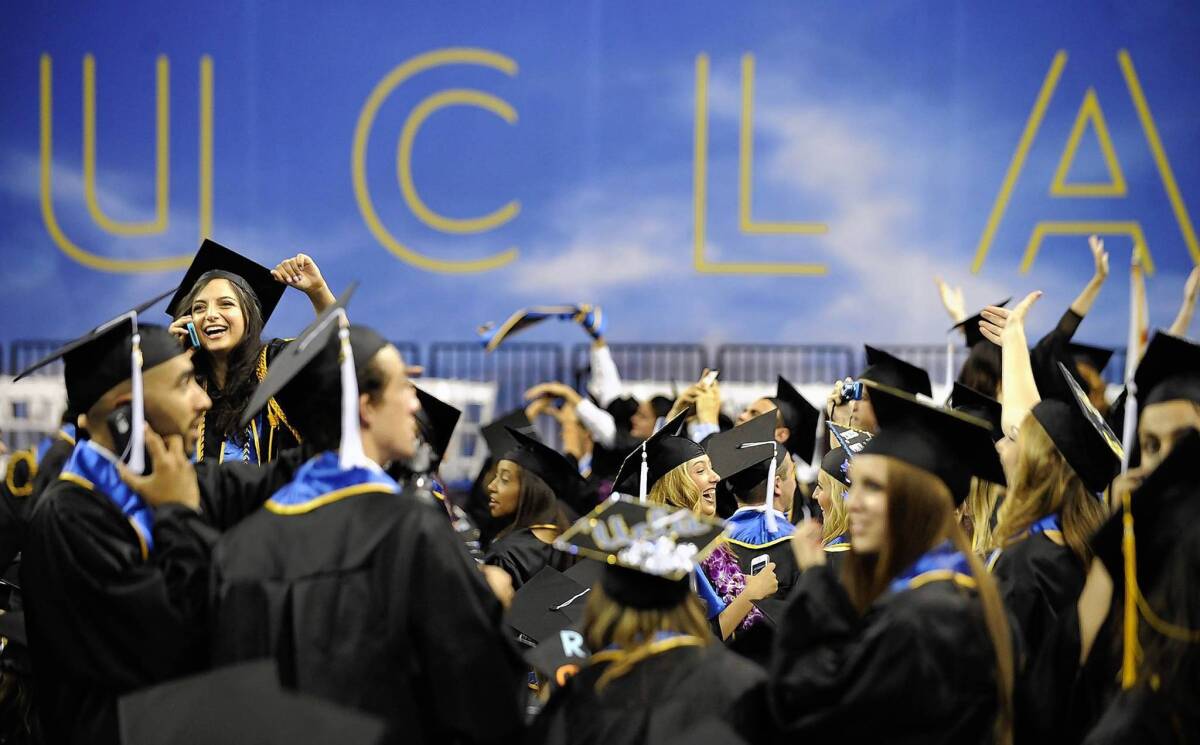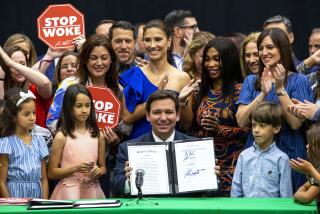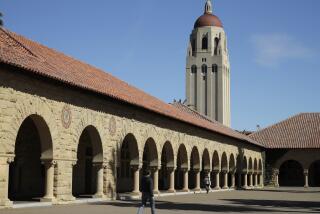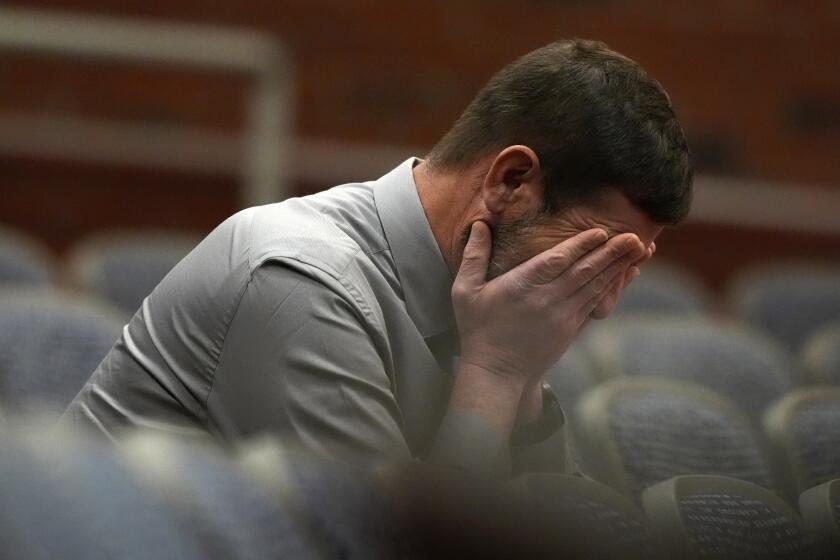Supreme Court prepares to hear affirmative action case

WASHINGTON — A constitutional challenge to Michigan’s ban on college affirmative action, which comes before the U.S. Supreme Court this week, has given California defenders of race-based admissions a second chance to contest the 1996 ban adopted by the state’s voters.
The Michigan constitutional amendment was modeled on California’s Proposition 209, and it forbids the state’s universities to give “preferential treatment” to any applicant based on race.
“The wording is identical. So if we are successful, then Prop. 209 would be unconstitutional as well,” said Mark Rosenbaum, chief counsel for the ACLU of Southern California. On Tuesday, he will argue on behalf of minority students from Michigan and urge the justices to void that state’s law.
He has the backing of many Californians, including the president and chancellors of the University of California, the state attorney general, the Civil Rights Project at UCLA, the San Francisco Unified School District, the Bay Area Rapid Transit District, and prominent liberal law and social science professors. They filed friend-of-the-court briefs arguing that California’s ban on race-based policies has been harmful and the Michigan law should be struck down.
A handful of California lawyers and law professors also filed briefs to support the Michigan ban.
Rosenbaum and the American Civil Liberties Union sued in 1996 to block the California ban from taking effect, but the U.S. 9th Circuit Court of Appeals rejected the challenge, and the Supreme Court refused to hear the case.
Now, in the Michigan case, Rosenbaum gets a chance to make a constitutional argument against state bans on affirmative action that would apply in California as well. He does not contend that race-based policies are required. Instead, he relies on what lawyers call the “political restructuring doctrine.” Under it, Rosenbaum argues, Michigan unfairly “rigged” the political process by taking away from university officials the power to set admissions policy and instead writing it into the state constitution.
By adopting the state ban, the voters — most of whom were white — deprived minority students of a right to press state officials to adopt affirmative action policies. This is “changing the political process along racial lines to prevent the state from taking constitutionally permissible race-conscious action,” he said.
A Michigan-based group called the Coalition to Defend Affirmative Action goes further and describes the state’s policy as a “new Jim Crow” system akin to the “separate but equal” doctrine that the high court established in Plessy vs. Ferguson in 1896.
After the Michigan amendment took effect in 2006, the number of black and Latino students entering the state’s public universities dropped by a third, the group said. The number of minority students at the University of Michigan Law School fell by 50%.
“This Supreme Court should not repeat the mistake of Plessy by turning over equality to the states and thus becoming responsible for the new Jim Crow that these laws are now creating in California, Michigan and other states,” Detroit attorney George B. Washington wrote in a brief.
Michigan’s attorneys have described this legal argument as strained, even ridiculous: How could the state be accused of denying “equal protection of the laws” by putting into law a ban on discriminating for or against people based on their race? “Michigan citizens have chosen to get out of the sordid business of categorizing individuals by race and sex,” said state Atty. Gen. Bill Schuette.
But in November, the U.S. 6th Circuit Court of Appeals, based in Cincinnati, struck down the Michigan constitutional amendment on an 8-7 vote. The eight Democratic appointees called the measure unconstitutional, while the seven Republican appointees dissented.
The Supreme Court, which has been skeptical of most affirmative action policies, then voted to hear the state’s appeal in Schuette vs. Coalition to Defend Affirmative Action.
The high court’s precedents from an earlier era may deserve the blame for the confusion.
In the late 1960s, the justices struck down some local measures in which white voters had acted to repeal civil rights laws. But the logic of those opinions was none too clear.
On one day in June 1982, the Supreme Court both upheld a California voter initiative that ended mandatory busing for desegregation in Los Angeles and struck down a similar one in Washington state for Seattle.
In the first case, Crawford vs. Los Angeles Board of Education, the court said voters had simply clarified the state constitution to prevent court-ordered busing. In the second case, a slightly different majority said Washington’s voters had wrongly taken away authority from the city school board.
Now, in the Michigan case, the defenders of affirmative action cite the Seattle case and say it stands for the principle that a state’s voters may not take the power over admissions from university officials. Michigan’s lawyers, in turn, cite the Los Angeles case and say it stands for the principle that voters can decide what belongs in their state’s constitution.
Four other states — Washington, Arizona, Nebraska and Oklahoma — have voter-approved bans on affirmative action that could be affected by the outcome in the Michigan case.
More to Read
Start your day right
Sign up for Essential California for news, features and recommendations from the L.A. Times and beyond in your inbox six days a week.
You may occasionally receive promotional content from the Los Angeles Times.







